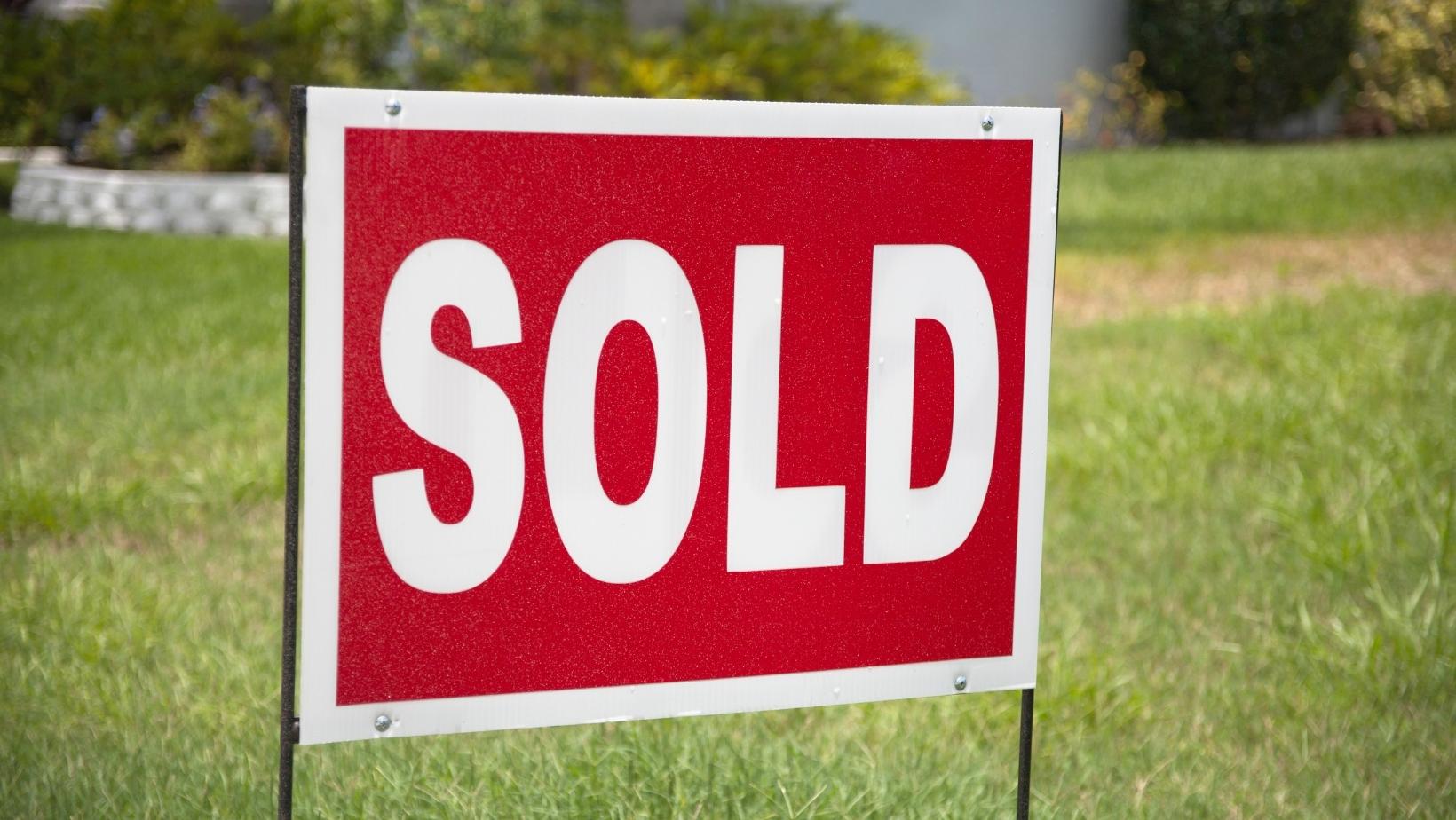My Fave: Jacques Torres Chocolate Chip Cookie Recipe

I found this Jacques Torres cookie recipe years ago, and I try to make them every Christmas. Not only is it an all-time favourite cookie of mine, I also have family and friends request that I make them.
They are soft, chewy and delicious—a real show-stopper. They take longer to make than standard cookies, but they are worth the fuss.
TOOLS:
Large Bowl
Whisk
Stand Mixer
Baking Sheet
Parchment Paper
Cookie Scoop (if you have one)
RECIPE:
Ingredients:
- 2 cups minus 2 tablespoons (8 ½ ounces) cake flour
- 1 2/3 cups bread flour
- 1 1/4 teaspoons baking soda
- 1 1/2 teaspoons baking powder
- 1 1/4 cups butter, room temperature (I used salted)
- 1 1/4 cups light brown sugar
- 1 cup plus 2 tablespoons granulated sugar
- 2 large eggs
- 2 teaspoons pure vanilla extract
- 1 ¼ pounds chopped dark or semi-sweet chocolate chunks or disks
- flaked sea salt to sprinkle
Instructions:
- In a large bowl, sift together (or whisk) the cake flour, bread flour, baking soda, and baking powder. Set aside.
- In the bowl of your stand mixer fitted with the paddle attachment mix the butter, brown sugar, and granulated sugar together for 5 minutes, until light and fluffy. Add in the eggs one at a time until mixed, and then vanilla. Continue mixing for an additional minute, scraping the sides as necessary.
- Turn the mixer to low and add the flour mixture until just combined. Fold in the chocolate until evenly incorporated. Cover and chill dough for 24-72 hours.
- When ready to bake, preheat the oven to 350°F. Line a baking sheet with parchment paper.
- Allow the chilled dough to sit at room temperature for 20-30 minutes before baking to soften slightly. Scoop out 3.5 ounces of dough for each cookie using a large cookie scoop—approximately 1/4 cup. Place mounds onto your baking sheet, spacing them 3- inches apart.
- Bake cookies for 15-18 minutes until the edges are golden. Turn your baking sheet 180- degrees once, halfway through baking.
- Remove from the oven and immediately sprinkle with sea salt. Allow the cookies to cool on the baking sheet for 5 minutes before transferring them to a wire rack to cool completely.
Notes:
- Instead of chilling the dough in a large bowl, you can scoop and measure it right away and chill it in prepared mounds on a large baking sheet until ready to bake. Baking chilled dough produces a slightly thicker cookie than room-temperature dough.
- Store airtight for up to 3 days. Or put them in an airtight container and store them in the freezer.
Nutrition
Serving Size: 1 Cookie Calories: 222 Sugar: 9.6 g Sodium: 91.4 mg Fat: 12.2 g Carbohydrates: 25.7 g Protein: 2.7 g Cholesterol: 49.1 mg
I hope you enjoy these cookies as much as I have over the past ten years! They melt in your mouth once baked; eating the cookie dough is equally delicious!
If you need a larger kitchen to make these cookies in, contact your Local REALTOR® today!
How to Build the Perfect Snowman

Making a snow person was my favourite pastime when I was a kid. I used to create families of snow people, including pets, and a home for them to live in. There is a bit of science behind the snow consistency and the success rate of building the perfect snowman.
The Right Snow
Proper snow consistency is key to making a snowman. Look for dense, wet snow that falls or is already on the ground on a warmer day. Stay away from cold days or blizzards like snow falls for snow person building—nobody wants to be out there anyways.
Location, Location, Location
Make sure you find a perfect location for your snowman to show it off. When I was a kid, I used to build my snow person in front of our living room window, so I could gaze upon it and say hello! The best spot to build a snowman for longevity is in a shaded part of your yard and/or in the center area where you roll your snowballs.
Best Structure
Build your snow person like a “pyramid” with a large ball at the bottom. Medium-sized for the tummy and a smaller one for the head! The smaller the snowman, the more structure it will have. As you increase the size, it becomes less stable. Once in a while I would make a 6ft snowman with the help of my dad or grandpa to add the finishing touches.
Rolling it Up
Start by making a larger-than-average snow ball (you know, the kind you throw at someone)…then start rolling it around in the snow and watch it magically become larger. Roll it around until you can’t physically push it anymore or until you are happy with the size. Once the main snowball is ready, pack snow around the base to make it extra secure to the ground.
Flatten Each Ball
While rolling each ball, make sure you stop from time to time to pack it down and ensure it’s a solid ball. Remember to do this for building the actual snow person—pat down a flat area between each ball to strengthen the structure.
The Perfect Accessories
My mom always had an old box of too-small hats and gloves for us to use for our snow person. That way, if they blew away or someone needed it, we wouldn’t be sad to let them go. We also had a gravel driveway that provided many rocks for the snowman’s eyes, nose, and buttons—and a garden for a carrot for the nose. Deer would often come into the yard and eat the nose!
If you are going for a certain aesthetic, try matching the snow person to the scheme of your home or outside decor. Try an ugly sweater on it or an old jacket for an extra bit of whimsy. Don’t forget to add branches for the arms!
Building a snow person or a snow family is a lot of fun for the whole family or alone. Plus, being outside is a great way to boost your mood and get active.
Contact your Local REALTOR® today to find the perfect home and yard to build a snow person in.
6 Tips for Selling Your Home

Do you plan on selling your home soon? Whether you are selling to accommodate your growing family or retiring and downsizing to a smaller home. This helpful guide will give you a few hints and tips to make selling your home a breeze.
Should You Hire a Real Estate Agent?
Whether you sell your home privately or with a listing agent is entirely up to you. Both choices come with various pros and cons.
If you choose to sell privately, there are no real estate agent fees, but the time and energy needed to try to sell your home this way might not be worth it. A realtor will have many connections, experience and knowledge that you, as a homeowner, lack. They are an excellent liaison between the two parties, know how to fill out paperwork and will have a network of buyers and the best inspectors and lawyers.
Whether you choose a real estate agent or sell privately, these tips will still be helpful.
Tip 1: Know the Market
The real estate market fluctuates a lot. It can be hard to know the climate of the market and who has the advantage if it’s the seller or the buyer. Check real estate reports to know if the market favours the seller or the buyer. If the market favours the seller, there will be low inventory and the quick sale of homes. If the market favours the buyer, there will be an abundance of inventory and a slow sales rate, with homes sitting on the market for weeks to months. This depends on the economic situation, national interest rates, location, and other factors.
Tip 2: Decide on a Listing Price
One of the best tips before selling your home is evaluating its worth in the current market. Your realtor can provide a Comparative Marketing Analysis at no extra cost. This analysis will look at a combination of factors, including features of your home, upgrades or renovations, the tax-assessed value of your property, and the selling price of comparable homes in your area.
Tip 3: Pick the Right Season
The season when you sell your home is equally as important as picking a listing price. There are pros and cons to selling in winter and warmer months.
Winter has lower inventory overall, so attracting buyers and offers is easier. There are a few drawbacks to selling in winter, though. Snowfall can make it hard for buyers to view your home and hide important features such as foundation and landscaping—let’s face it, moving also sucks in winter. Try to list in autumn before the first snowfall to avoid this issue.
Spring and Summer usually have the highest amount of inventory to hit the market. An active market with more competition for you as a seller. This might be the ideal time for you to sell your home. Consider listing your home at a competitive price to attract more offers if that is the case.
If you are not looking for a quick sale, try listing your home in autumn. It is a great time to list because summer is winding down. It is easier for your home to stand out as fewer homes are on the market. There is changing leaves everywhere in autumn to enhance the beauty of your neighbourhood.
Tip 4: Staging & Marketing
Staging is not only a great way to show off the potential of your house to prospective buyers but also makes the home very appealing in the listing photos.
Start by decluttering things you don’t need every day and de-personalize the space. If this seems overwhelming, there are many home staging businesses out there that can help you.
Click here to open a comprehensive guide to staging your home.
To market your home, include these details in your listing:
- Good quality professional photos
- Photos of your home’s exterior and yard in various seasons–focus on exciting features like a tiered deck, pool, etc.
- Drone aerial Photography and videography of the property and neighbourhood. This can significantly improve the potential for a sale by up to 70%.
- Showcase interesting details and wow features of your home. (fireplace, finished basement, kitchen upgrades, etc.)
- Provide information about amenities, schools, shopping in the area, and walkability to these places.
- Bonus if you can have a video virtual tour or 3d tour of your home created for you.
Tip 5: Showing Your Home
Most interested buyers want to see a home in person. There are a few ways to accomplish this: an open house for multiple showings at one or scheduled showings.
Before viewers arrive, try to put things away and deep clean them beforehand.
Tip 6: Offers
In an ideal world, you would get multiple offers on your home, and you can select the best one for you. You can accept, counter or reject any offers you receive. Look out for offers that have unappealing conditions or contingencies that must be met before the sale goes through. The buyer’s conditions could be various asks, the most common being a home inspection, secured financing or the sale of their own home.
Review the paperwork with a lawyer when you get the right offer and are ready to accept it. There might be additional requests before the buyer agrees to close, such as including all appliances or requesting a repair. Your lawyer will ensure the paperwork goes through to the transfer of ownership.
Now that you have read through this selling your-home guide, I hope you feel a little more comfortable starting the process yourself.
If you are looking into selling and/or buying a new home enlist the help of a trusted REALTOR® to help you through the process.
5 Dog-Friendly Patios in Saskatoon

Saskatoon has a variety of restaurants, but have you ever wanted to bring your four-legged friend along for a meal?
Never leave your dog at home again with these delightful restaurants with pet-friendly patios.
Prairie Sun Brewery
Prairie Sun is located just after the bridge on Broadway. It is easily walkable with your furry friend from downtown and surrounding neighbourhoods. Sit down, drink a beer and eat some delicious food on their sunny patio, which is open for dogs and people alike. Prairie Sun started as just a local craft beer brewery and has expanded into the restaurant hot spot it is today.
Leopold’s Tavern (Rosewood)
The Rosewood location of Leopold’s Tavern has a great dog-friendly patio, enclosed with a backyard vibe. The patio features an exclusive pet and person-side entrance. The staff graciously greets you with a treat for your dog. Enjoy elevated pub food and a great selection of drinks at the Tavern.
Stumbletown Distilling
Stumbletown is a new establishment on Quebec Avenue, off Idylwyld—an easy walk from Mayfair or Caswell Hill. The quaint patio is a great place to bring your dog, have a few drinks, munch on some snacks and unwind. The distillery makes various flavours of gin and gin cocktails. On your way out, grab a bottle of gin to take home!
Cohen’s Beer Republic
Cohen’s is located in Riversdale on the corner of Idylwyld and 20th Street. You can’t miss the curved dark blue building! There is a small, yet mighty, patio for you and your dog to enjoy, which is very walkable from downtown, Riversdale, or other surrounding neighbourhoods. They have lovely drinks and an eclectic menu — sure to please anyone.
City Perks
City Perks is an adorable local cafe in the heart of City Park. A semi-enclosed deck is an excellent place for your pup, and it’s well shaded with mature trees and table umbrellas—a quick walk from the river pathways and parks along Spadina. The cafe’s food, drink and dessert menus are incredible. Bring your dog and stay for the cheesecake.
Make any outing more enjoyable by bringing your dog with you to these yummy Saskatoon restaurants. All of these eateries have a nice patio space to share food, drinks, and a water bowl with your four-legged friend!

 Facebook
Facebook
 X
X
 Pinterest
Pinterest
 Copy Link
Copy Link






